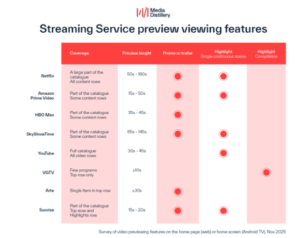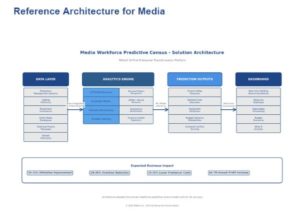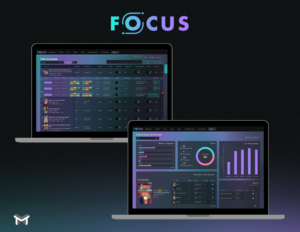Click here to view original article.
“The revolution will not be televised”
The great hook from the 1971 song by Gill Scott-Heron never felt so apt when we think of it in context to the streaming revolution that we are witnessing today. A phenomenon which was spearheaded by Netflix and Hulu about a decade ago has now gone mainstream. On-demand content has broken linear viewing schedules and led traditional broadcasters to rethink their business model around this change.
With vast improvements in internet speeds and an increase in the number of video-supporting handheld devices, consumers have shifted their focus from traditional television broadcasters to over-the-top (OTT) media services that stream over the internet.
In a time when the world is battling the coronavirus crisis, cord-cutting has accelerated and streaming entertainment services are seeing a high adoption. The desire to break away from TV schedules and have anywhere-anytime access to high-quality content has been fundamental drivers of this change.

With the change in TV viewing habits, traditional media has realized this shift and started to provide the same experience as video on demand and OTT platforms. The entry of new players like HBO Max and the recent acquisition of Pluto TV by Viacom are some examples where broadcasters are taking the direct-to-consumer (D2C) route.
It’s not only entertainment; sports broadcasters and leagues such as Bundesliga and Premier League have also recognized the surge towards OTT platforms and are planning to bring sports content directly to users by launching their own OTT platforms. Many leagues are selling their rights to produce and showcase content directly on OTT platforms. Today, broadcasters are now investing heavily in an array of shows for their new services
In this article, we will explore the trends that are most relevant to content providers concerning the OTT revolution and see how content providers can use technology to adapt to these changes.
What are the major trends visible in this space?
Over the years, OTT has established itself as a new-age content consumption platform. With constantly changing user needs and competition in the market, OTT players are evolving, and we can see a significant change in the way the content is being served.
1. First signs of market saturation for streaming giants
With the entry of Disney+ and other OTT services, there are early signs of market saturation for the US Giants. With every major broadcaster in the process of launching or acquiring streaming services, the market is competing for a share of the wallet and aiming for higher viewing hours.
OTT companies are leveraging personalization and enhancing search capability to keep audiences engaged on their platforms and prevent churn. During this time, people might choose to unsubscribe if they are not able to remain engaged with the content and might look for other options.
2. Rise of originals
Tech players are foraying into the realm of creating their content, also known as ‘originals’. Tech companies that have access to consumption and preference data of their consumers are well-poised to spend on developing original stories. These shows/movies are produced wholly in-house or in co-production with other studios with OTT channels taking over the creative control. Many examples can be cited of existing archives or old videos being repurposed to create content and becoming instant hits. The Manchester City documentary on Amazon Prime and The Last Dance on Netflix are two significant examples of old archived content released as originals. Amazon Prime itself has kept USD 6B aside for in-house or co-production projects aimed at creating more Originals.
3. Evolving interest towards international content
There is an increasing interest in the demand for international content on OTT streaming services. The popularity of shows like Money Heist, Dark, and acclaimed movies like Parasite only confirms this trend. Subtitles have succeeded in breaking the language barrier and are instrumental in driving this interest in overseas content. But these subtitles need to be highly accurate if they are to convey the right meaning and allow the emotions of the original dialogue to come through.
How content providers can leverage AI to be OTT-ready
1. Adherence to OTT compliance
Distributing a movie/TV show over a digital platform across different geographies has some challenges. Content producers and editors have to deal with multiple content formats, each with its own video specifications. These need to be processed and delivered quickly under the various compliance standards for audio and video quality, captioning, subtitles, and censor edits.
Since the target audience of OTT players typically covers a broad demographic, OTT providers need to ensure that they follow a standard format while publishing content. The Society of Motion Picture and Television Engineers (SMPTE) has created the Interoperable Master Format (IMF), a standard that all media companies can follow to ensure that they adhere to regulatory compliances.
OTT players need to ensure adherence to regulatory compliances and optimum quality of the media they produce. Post-production efforts to make a piece of content comply with IMF standards involve high manual bandwidth and can be a tedious task for content owners. AI-based compliance and QC solutions can check and identify anomalies concerning audio and video, detect missing closed captions, and ensure adherence to OTT distribution, thereby boosting post-production efficiency.
To know more, read this case study on how a mass media conglomerate was able to boost its efficiency fivefold by using AI-enabled workflows.
2. International distribution requirements
The increase in demand in recent years has put a strain on traditional workflows for localization, and OTT players are looking to reduce the ‘time to market’ when it comes to international audiences. For this, subtitles of content should comply with both audio and video formats. Manually aligning subtitles to the corresponding scenes requires significant effort.
AI can be instrumental in this regard. It can auto-conform the subtitles in different languages to the corresponding scenes to automatically generate an integrated asset that complies with subtitle standards.
3. Preventing customer churns
Retaining your subscribers is one of the foremost objectives of OTT players in the current scenario. This can be achieved through a higher degree of personalisation by the use of content-based recommendation engines.
“No matter how good your content is, it doesn’t matter if it cannot be found”
Content searchability is another key area of interest that is currently being explored. But the precursor to making your content searchable is the presence of rich content metadata.
This metadata to analyse content at a deeper level can be generated by AI tagging engines, which can unlock multiple opportunities with content in terms of analytics, repurposing, and monetization. This provides a great opportunity for platforms where they can combine user metrics with deep content insights and get a 360-degree view on what is working for their content.
Conclusion
OTT service providers can leverage AI across the media value chain, from content creation to distribution. Hypertagging engines which generate media relevant metadata at scale can be used for gathering deep content insights, discover specific moments and accelerate editorial workflows.
This is by no means an exhaustive list but can be taken as a primer to encourage media players to think of technology as an enabler in navigating the streaming landscape.









